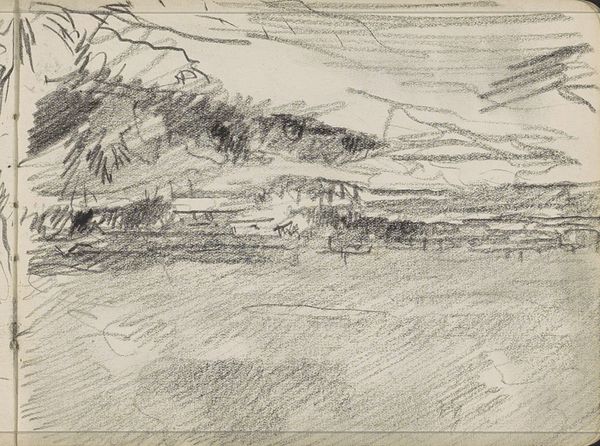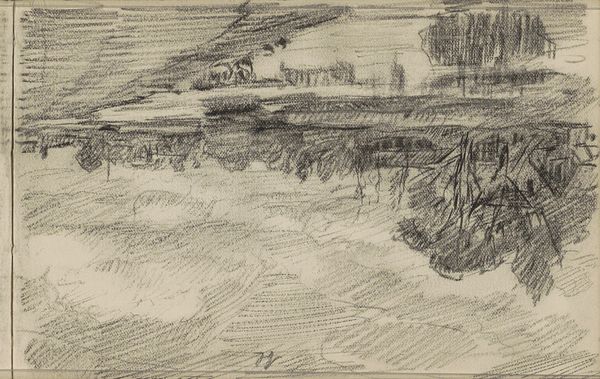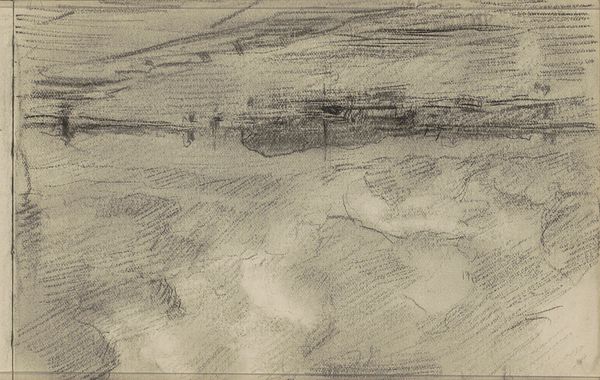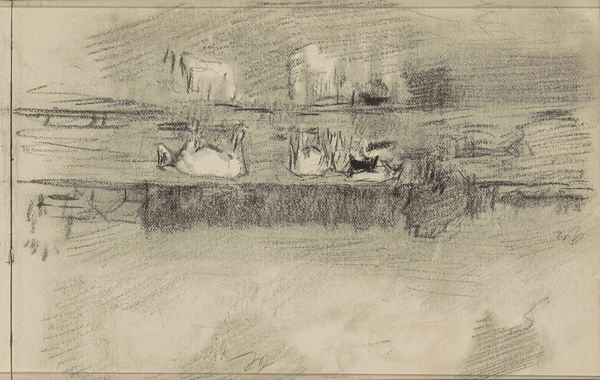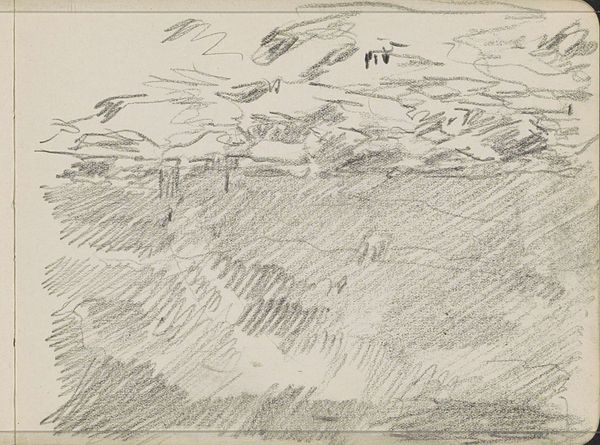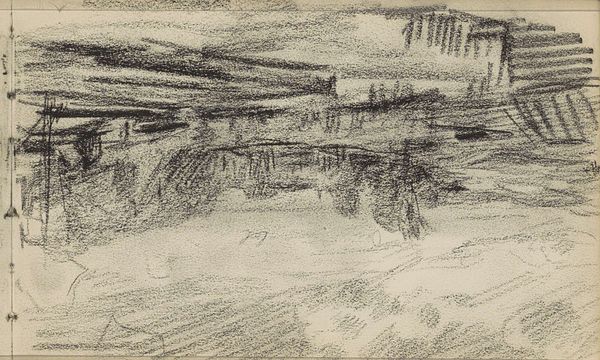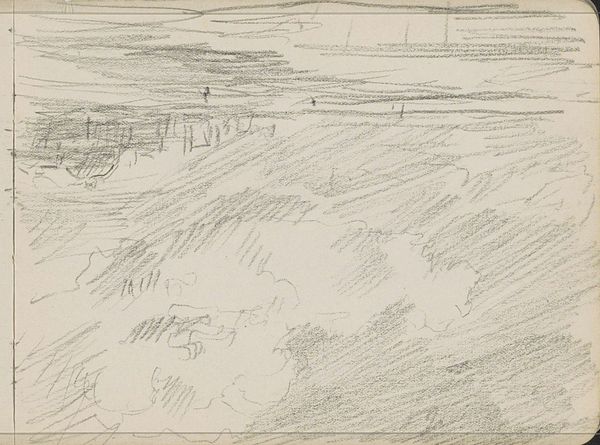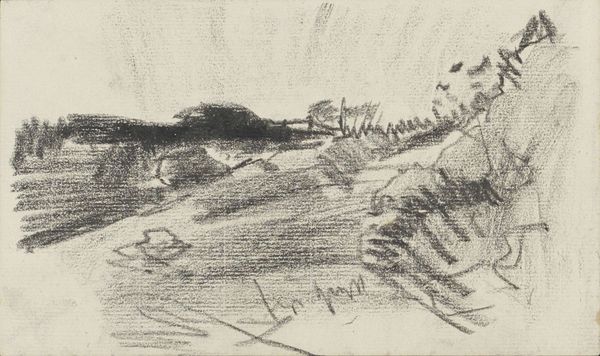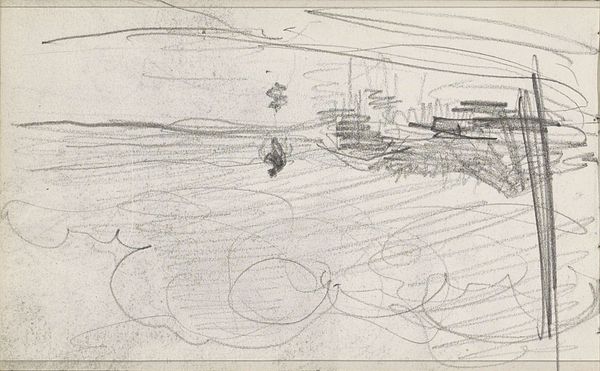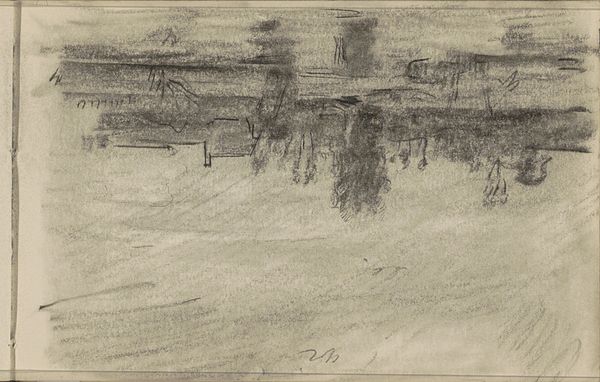
drawing, pencil
#
drawing
#
pencil sketch
#
landscape
#
river
#
pencil
#
realism
Copyright: Rijks Museum: Open Domain
Editor: This drawing, "Rivierlandschap met molens," or "River Landscape with Mills," by Johan Antonie de Jonge, is probably from 1909, done in pencil. I find it evocative, even melancholic, with its soft lines and muted tones. What do you see in this piece? Curator: The quick, almost frantic, application of pencil reminds me of other studies done en plein air, yet, the subject evokes the enduring presence of the Dutch landscape. Tell me, what symbols do you recognize and what cultural narratives might they trigger for viewers across time? Editor: Well, the mills obviously suggest Dutch ingenuity and control over nature. The river implies commerce and connection, but the overall sketchiness also conveys a sense of transience... a moment captured but fleeting. Curator: Exactly. These visual cues—mills, rivers, the fleeting nature of the sketch itself—speak volumes about the cultural relationship to land, labor, and progress in the Netherlands. Notice how the reflection isn't just mimicking reality, it distorts it—introducing uncertainty and the ephemeral qualities of existence. The symbols of power – the windmills – are softened in this image, like memories, do you think? Editor: That’s a great point. It almost feels like the drawing is a memory itself, fading and impressionistic rather than a hard factual statement. I hadn’t thought about it that way before. Curator: Consider this also a commentary. What survives in the cultural memory often distorts as much as it informs. So the quick sketch and reflection of form encourages questions of "what is retained? " and "what does that selection communicate?" Editor: That really changes my understanding, that these everyday symbols are layered with cultural meaning and selective memory. Curator: Visual imagery constantly renegotiates these connections, reminding us that we're not just seeing an image; we are witnessing cultural values being actively preserved, reinterpreted, or even challenged.
Comments
No comments
Be the first to comment and join the conversation on the ultimate creative platform.

